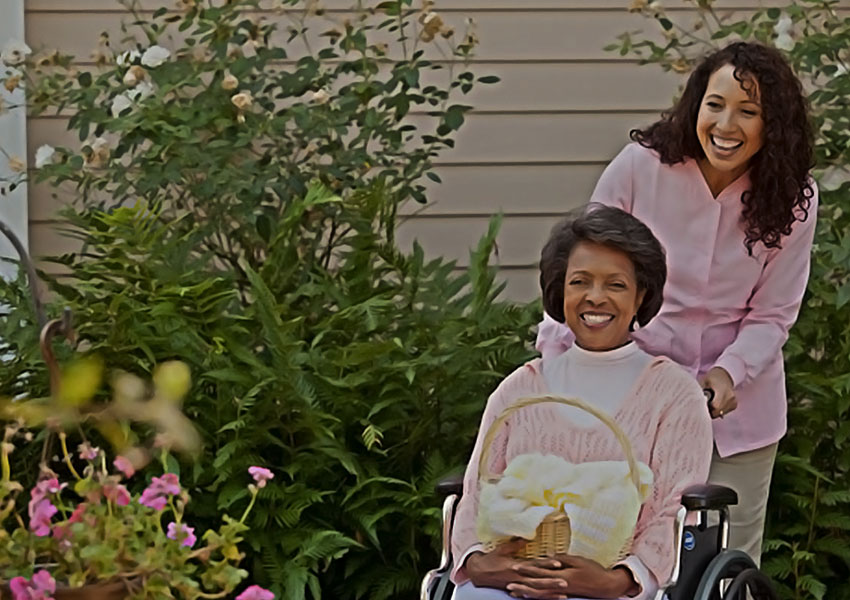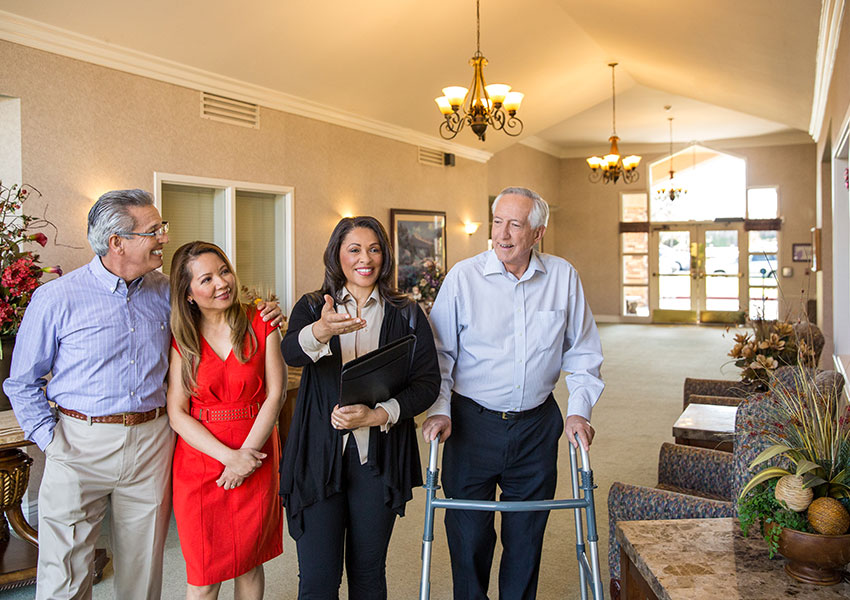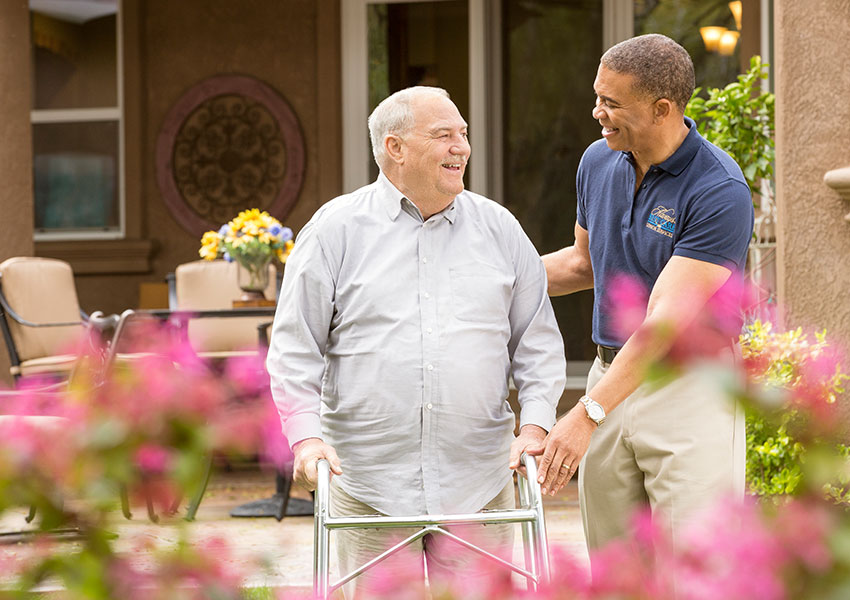They present in many forms, and it’s important to recognize and understand the differences.
One of the most common referrals seen in primary are is for cognitive evaluation of older persons, whose families are concerned about cognitive decline. Often, the referral is bypassed completely and a primary care provider (PCP) will simply enter a diagnosis of dementia into the chart based on family report. A member of the drug class known as acetylcholinesterase inhibitors (ex. Donepezil [Aricpet], Rivastigmine [Excelon])—a type of drug that may treat the symptoms of Alzheimer’s dementia—will be prescribed and the family will go on its way.
Many people are content with this process, as it confirms what their families were suspecting, and gives them a method of addressing their concerns through use of a medication. Where there is value in simplifying the process of diagnosing dementia, there is a lot missed in simply labeling cognitive decline or loss of independence as dementia. This would be similar to dermatologist labeling all presenting problems as “rashes” and prescribing the same cream.
The term dementia encompasses a wide range of diagnoses and symptoms. Where there are common symptom presentations across dementias, the specific diagnoses are unique and carry with them differing prognoses (expectations of lifespan and the nature of decline), treatments, symptoms, drug interactions, and support needs for family members and caregivers.Families and patients often assume that dementia and Alzheimer’s are synonymous, and that all dementias follow a common course. This is not true. As this article will demonstrate, there is value in specific assessment and clarification of what kind of dementia a person has.
A Note about Terms
The term dementia comes from the Latin dēment, meaning “out of one’s mind” with the noun suffix “ia.” Because of the derogatory nature of this concept, there is a movement in the medical community to rename dementia to the major and minor neurocognitive disorders (APA 2013). Given that it is still the most commonly used term by professionals and systems, the neurocognitive disorders will continue to be referred to as “dementia” in this article due to this being the more familiar term. However, the transition is encouraged, because it emphasizes the biological foundations of dementia and reduces stigma.
The Commonalities Across Dementias
To understand why it is important to differentiate between the types of dementias (to the best of our ability, as this is not an exact science), it is important to first recognize their similarities. Most dementias have symptom commonalities that lead the people withthem and their families to believe that a diagnosis is warranted. It is these commonalities that cause families and practitioners to take pause in further diagnosis. Historically, the “treatment” of dementia was mostly focused on securing in-home health services and looking at possible placement in a facility.
Changes in Cognition
Memory loss is the first and most prominent complaint in patients and families concerned about dementias (Mayo Clinic 2014). It is important to note that what looks like memory loss may not always be related to the function of memory. People who have slower processing speed (it takes them longer to think about what others are saying), difficulty with attention, and problems with language, often look as though they cannot remember things, when it is another cognitive difficulty they are experiencing. Many people also notice and endorse difficulty finding words or speaking, confusion about previously familiar people and places, difficulty with complex tasks, and orientation (understanding when and where a person is). Changes in cognition are an aspect of all dementias. However, the nature of the change (true memory loss versus attention, language, or judgment) can help to identify a specific type of dementia.
Loss of Independence
All people with dementia have lost some independence in Activities of Daily Living (ADLs), such as brushing their teeth, dressing, feeding themselves, and Instrumental Activities of Daily Living (IADLs), such as driving or navigating transportation, taking medications, paying bills. To diagnose any type of dementia, it’s necessary to establish that the changes in cognition interfere with daily life, and require the addition of a caregiver or other person providing assistance.
“Masking,” “Shopping,” & Other
Behaviors of Frustration to Caregivers
There is a certain level of fluctuation in cognition that exists in all dementias. One of the most common complaints heard from family members and caregivers is “he’s so good at the doctor’s, but at home, he’s not like this at all.” This is something referred to in the industry as “masking,” when people with a dementia are able to rally in the moment and have a more clear presentation. Often they try to distract professionals through use of humor or engaging areas of strength (telling historical stories they recall well), that make them appear to be higher functioning than they are. People with dementias are also prone to collecting and hiding things, something referred to as “shopping.”
These types of behaviors are common to many people with dementias. They are often the result of a mix of issues with impulse control, recognition, and sometimes paranoia—the feeling that they need to hide things before others take them. These behaviors are often quite frustrating to caregivers, who worry that people will suspect them of lying about the severity of symptoms or accuse them of taking things that belong to the person with dementia.
Why Diagnosis Matters
With all of the commonalities associated with dementias, it is reasonable to ask: “Why does it matter what kind of dementia someone has?” In some cases, the answer may be a matter of life and death. The medical community has come a long way from the 1694 Thomas Willis’s disease of “Stupidity and Foolishness… some at first crafty and ingenious, become by degrees dull, and at length foolish, by the mere declining of age.” (Berrios 1989.) It has transitioned to a model of understanding the biological basis for symptom presentations, and the significant variations in these presentations in people with evidence of dementia. We have also transitioned from focusing on in-home health or placement to medications, behavioral plans, caregiver support, and education.
There are many different forms of dementia, each with its own etiology (history of development), diagnosis, prognosis, and treatment. This article serves to demonstrate the value of further clarifying diagnosis rather than provide in depth information about each of these variations of dementia. Of the many different forms of dementia, there are five major types that account for the vast majority of diagnoses (Keefover 2013).
Alzheimer’s Disease (AD)
Alzheimer’s Disease (AD) is the most common form of dementia, accounting for a range of 60-80 percent of dementias, and it is the sixth leading cause of death in the United States (Alzheimer’s Association 2015). AD is a slow progressing disorder, and usually presents as memory loss, progressing to further impairment across cognitive domains. Because of the memory loss, people with Alzheimer’s will often begin to demonstrate those “shopping” behaviors and may appear paranoid or accusatory of caregivers. Alzheimer’s dementia is one of the few dementias for which acetylcholinesterase inhibitors (ex. Donepezil [Aricpet], Rivastigmine [Excelon], and a multi-receptor antagonist, known as memantine (Namenda) may actually slow symptoms.
This is important to note: These drugs are often prescribed for all people who are diagnosed with dementia. However, they are only FDA approved to treat Alzheimer’s dementia. Some evidence suggests that they may be helpful in the treatment of other dementias, but these are not confirmed. Much of this prescribing comes from a desire of the medical community to give the family something that makes them feel as though they can help. These medications are not without cost and some significant side effects, which are important to consider when assessing the benefits and costs of taking a medication that may not be approved to treat the dementia someone has.
Vascular Dementia (VD)
Vascular Dementia (VD) is a form of dementia resulting from vascular (relating to blood vessels) complications. It can often be the result of a series of strokes, hence its historical name “post-stroke” or “post-infarct” dementia, but a person does not have to have a stroke to have VD. It accounts for about 10 percent of dementias (Alzheimer’s Association 2015), and is one of the few dementias that has the potential for prevention. VD results from blockages in vessels caused by lifestyle choices (diet, exercise, smoking), some chronic conditions, and microscopic bleeding (Mayo Clinic 2014).
Unlike AD, VD often presents as impairment in judgment, reasoning, and executive functioning (poor decisions) rather than memory loss, although memory loss can be a part of VD. Knowing risk factors for VD can serve to prevent development of the diagnosis in the first place. Once the diagnosis of VD is made, it can result in treatment of the underlying vascular conditions to slow decline. Due to the lifestyle choicesof many Americans, many people develop something called “mixed” dementia, which is a combination of AD and VD.
Lewy Body Dementia (LBD)
Lewy Body Dementia (LBD) is a lesserknown, and therefore under-diagnosed form of dementia that may actually be the second most common form of dementia in the United States (LBDA 2014). It is characterized by cognitive changes in combination with problems with movement (issues with walking, stability, tremors) and visual hallucinations. People with LBD may also have more variable cognition than people with other forms of dementia (more dramatic changes in alertness and memory). There is also some evidence of REM sleep disorder throughout the life history of people with LBD.
The importance of knowing the diagnosis of LBD is most significant when it comes to medications. According to the LBDA (2014), “Up to 50 percent of patients with LBD who are treated with any antipsychotic medication may experience severe neuroleptic sensitivity, such as worsening cognition, heavy sedation, increased or possibly irreversible parkinsonism, or symptoms resembling neuroleptic malignant syndrome (NMS), which can be fatal. (NMS causes severe fever, muscle rigidity, and breakdown that can lead to kidney failure).”
Given that neuoleptics are prescribed in many AD patients for behavioral and sleep problems, this is very important to know. LBD may also be one of the fastest progressing dementias, with an average life expectancy following diagnosis of about five years.
Parkinson’s Disease (PD)
Formerly its own diagnosis, PD is being combined with LBD due to their common foundations—protein deposits named after their founder “Lewy” in the brain. The difference between PD and LBD is mostly in the order of presentation of symptoms. PD presents first as a movement disorder, due to damage by the disease to the part of the brain that manages movement (Alzheimer’s Association, 2015). Parkinson’s disease is more common than previously thought. An estimated 2 percent of adults aged sixty-five and older have this neurological disorder. One of the principal treatments of PD is l-dopa, which is a synthetic drug designed to increase the amount of dopamine in the brain, which results in better movement. Sadly, a common side effect of increasing dopamine is hallucinations, for which doctors often prescribe the neuroleptics that are very dangerous to LBD and PD patients. Knowing the diagnosis of PD or LBD can help families work with their professionals to prevent possible dangerous side effects.
Fronto-Temporal Dementia (FTD)
FTD results from degeneration of the frontal lobes (responsible for reasoning, decision making, impulse control, and some emotion regulation), and the temporal lobes (responsible for language and some aspects of memory). FTD comes in three forms, known as clinical subtypes:
behavioral variant (marked by personality changes,impulse control and sometimes violence)
semantic dementia (the loss of verbal memory and understanding)
and progressive non-fluent aphasia (changes in the ability to speak, read, write, and understand what others are saying) (AFTD 2015, UCSF 2015)
All dementias are heartbreaking and difficult for patients and families to go through, but FTD is particularly insidious in some of its symptoms. There is significant value in knowing this diagnosis in the areas of preparing and educating family and caregivers. People with FTD have some of the greatest difficulty communicating and can become violent with caregivers.
Due to the unique variations across types, one can begin to see the value of more specific diagnosis, whether it relates to medication planning, family education, and treatment considerations. Why then, is it still common to see “dementia” diagnosed in the medical community? It’s a complicated process to establish diagnosis, and even then, the common saying amongst medical professionals is the only true way to truly know what type of dementia someone has is through autopsy. However with technology like MRI and CT scans, neuropsychological assessment, family history and interview, we are getting much better at diagnosing specific types of dementia during the lifetime of individuals.
Once a probable diagnosis is made, medical professionals can pair with families to provide education on the type of dementia, common presentations, methods of coping with changes, and long-term planning. Even something as simple as explaining to a family member that hallucinations are common with LBD patients can serve to dramatically reduce acute anxiety and give caregivers peace of mind.
Families and patients often demonstrate benefit from clarification of diagnosis. There is power in a name. It often leads to finding the community centered around the name. Each form of dementia has its own association with further information, groups and support options. It also aids the family and the patient in engaging their medical community to join with them in the progression of the disease and long-term care options.
Sources
Alzheimer’s Association 2015. “Types of dementia.” Retrieved from www.alz.org
— 2015. Parkinson’s disease. Retrived from www.alz.org
American Psychiatric Association. 2013. Diagnostic and statistical manual of mental disorders: DSM-5 (5th ed.). Arlington, VA: American Psychiatric Association Publishing.
Association for Fronto-Temporal Degeneration (AFTD). 2015.“Nonfluent/agrammatic variant primary progressive aphasia.” Retrieved from www.theaftd.org
Berrios, G.E. 1989. “Dementia: Historical overview.” In A. Burns and R. Levy (Eds.), Dementia. New York: Springer Publishing Co. Keefover, R.W. 2013. “Dementia. Presentation at the West Virginia
Integrated Behavioral Health Conference.” Retrieved from www.dhhr.wv.gov
Lewy Body Dementia Association (LBDA). 2014. “LBD diagnosis.” Retrieved from www.lbda.org
Mayo Clinic. 2014. “Vascular dementia.” Retrieved from www.mayoclinic.org
University of California San Francisco (UCSF). 2015. “Fronto-temporal dementia.” Retrieved from memory.ucsf.edu/ftd/
Article written by Carilyn Ellis, PsyD Featured article in CSA Journal 64
Reprinted by Always Best Care Senior Services with permission from the Society of Certified Senior Advisors.
The Certified Senior Advisor (CSA) program provides the advanced knowledge and practical tools to serve seniors at the highest level possible while providing recipients a powerful credential that increases their competitive advantage over other professionals. The CSA works closely with Always Best Care Senior Services to help ABC business owners understand how to build effective relationships with seniors based on a broad-based knowledge of the health, social and financial issues that are important to seniors, and the dynamics of how these factors work together in seniors’ lives. To be a Certified Senior Advisor (CSA) means one willingly accepts and vigilantly upholds the standards in the CSA Code of Professional Responsibility. These standards define the behavior that we owe to seniors, to ourselves, and to our fellow CSAs. The reputation built over the years by the hard work and high standards of CSAs flows to everyone who adds the designation to their name. For more information, visit www.society-csa.com.
Always Best Care Senior Services
Always Best Care Senior Services (www.alwaysbestcare.com) is based on the belief that having the right people for the right level of care means peace of mind for the client and family. Always Best Care Senior Services has assisted over 25,000 seniors, representing a wide range of illnesses and personal needs. This has established the company as one of the premier providers of in-home care, assisted living placement assistance, and skilled home health care.
To print this article CLICK HERE




























































































































